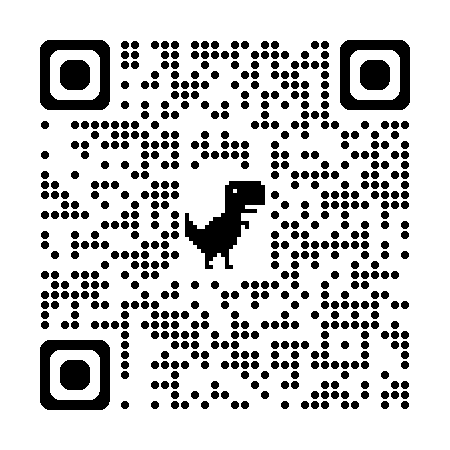08
2023-11
Interpretation of the Supreme People's Court on Several Issues concerning the Application of Law in the Trial of Cases of Patent Infringement Disputes (Issued 2009)
Issued by: Supreme People's Court
Document No.: Fashi [2009] No. 21
Release date: 2009.12.28
Implementation date: 2010.01.01
Timeliness: Current Effective
Interpretation of the Supreme People's Court on Several Issues Concerning the Application of Law in the Trial of Patent Infringement Disputes In order to correctly try patent infringement disputes, this Interpretation is formulated in accordance with the the People's Republic of China Patent Law, the the People's Republic of China Civil Procedure Law and other relevant legal provisions, and in the light of the actual trial.
Article 1 The people's court shall determine the scope of protection of the patent right in accordance with the claims claimed by the right holder and the provisions of the first paragraph of Article 59 of the Patent Law. If the right holder changes his claim before the end of the debate in the court of first instance, the people's court shall allow it. Where the right holder claims to determine the scope of protection of the patent right by a subordinate claim, the people's court shall determine the scope of protection of the patent right based on the additional technical features recorded in the subordinate claim and the technical features recorded in the claim to which it refers.
Article 2 The people's court shall determine the content of the claims stipulated in the first paragraph of Article 59 of the Patent Law based on the records of the claims and the understanding of the claims by ordinary technicians in the art after reading the description and the drawings.
Article 3 The people's court may use the description and drawings, the relevant claims in the claims, and the patent examination files to interpret the claims. The description specifically defines the terms of the claims, from which they are specifically defined. If the meaning of the claims is still not clear in the above method, it can be explained in combination with known documents such as reference books, textbooks and the like, as well as the common understanding of those of ordinary skill in the art.
Article 4 For a technical feature expressed as a function or effect in a claim, the people's court shall determine the content of the technical feature in combination with the specific embodiments of the function or effect described in the specification and the drawings and their equivalent embodiments.
Article 5 The people's court shall not support a technical solution that is only described in the specification or drawings but not recorded in the claims, if the right holder includes it in the scope of patent protection in a case of patent infringement dispute.
Article 6 The people's court shall not support the technical scheme abandoned by the patent applicant or patentee through the amendment of the claim, specification or statement of opinions in the patent authorization or invalidation procedure, and the right holder shall include it in the patent protection scope in the case of patent infringement dispute.
Article 7 When the people's court determines whether the alleged infringing technical scheme falls within the scope of protection of the patent right, it shall examine all the technical features recorded in the claim claimed by the right holder. If the alleged infringing technical scheme contains the same or equivalent technical features as all the technical features recorded in the claim, the people's court shall determine that it falls within the scope of protection of the patent right; if the technical features of the alleged infringing technical scheme are compared with all the technical features recorded in the claim, it lacks more than one technical feature recorded in the claim, or has more than one technical feature that is different and not equivalent, the people's court shall determine that it does not fall within the scope of protection of the patent right.
Article 8 Where a design that is the same as or similar to the authorized design is used on products of the same or similar type as the patented design product, the people's court shall determine that the accused infringing design falls within the scope of protection of the patent right for the design as stipulated in the second paragraph of Article 59 of the Patent Law.
Article 9 The people's court shall, on the basis of the uses of design products, determine whether the product categories are the same or similar. To determine the purpose of the product, you can refer to the brief description of the design, the international design classification table, the function of the product, and the sales and actual use of the product.
Article 10 The people's court shall judge whether the designs are the same or similar on the basis of the knowledge level and cognitive ability of the general consumers of the patented design products.
Article 11 When the people's court determines whether the design is the same or similar, it shall make a comprehensive judgment based on the overall visual effect of the design based on the design features of the authorized design and the alleged infringing design; for the design features mainly determined by the technical function and The material, internal structure and other characteristics of the product that do not affect the overall visual effect shall not be considered.
The following situations usually have a greater impact on the overall visual effect of the design:
The parts of the (I) product that are easy to be directly observed during normal use are relative to other parts;
The design features of the (II) authorized design that are distinct from the existing design are relative to other design features of the authorized design. If there is no difference in the overall visual effect between the alleged infringing design and the authorized design, the people's court shall determine that the two are the same; if there is no substantial difference in the overall visual effect, it shall determine that the two are similar.
Article 12 Where a product that infringes the patent right for invention or utility model is used as a component to manufacture another product, the people's court shall determine that it is an act of use as provided for in Article 11 of the Patent Law; where the other product is sold, the people's court shall determine that it is an act of sale as provided for in Article 11 of the Patent Law. Where a product that infringes the patent right of a design is used as a part or component, and another product is manufactured and sold, the people's court shall determine that it is a sales act as stipulated in Article 11 of the Patent Law, except that the product that infringes the patent right of a design has only technical functions in the other product. In the cases mentioned in the preceding two paragraphs, if there is a division of labor and cooperation between the infringers, the people's court shall determine it as a joint infringement.
Article 13 The people's court shall determine the original product obtained by the patented method as a product directly obtained by the patented method as stipulated in Article 11 of the Patent Law. For the act of further processing and processing the above-mentioned original product to obtain subsequent products, the people's court shall determine that it belongs to the product directly obtained by using the patented method as stipulated in Article 11 of the Patent Law.
Article 14 If all the technical features of the accused falling within the scope of patent protection are the same as or have no substantial difference with the corresponding technical features in an existing technical solution, the people's court shall determine that the technology implemented by the accused infringer belongs to the existing technology stipulated in Article 62 of the Patent Law.
If the alleged infringing design is the same as or has no substantial difference with an existing design, the people's court shall determine that the design implemented by the alleged infringer belongs to the existing design specified in Article 62 of the Patent Law.
Article 15 The people's court shall not support the defense of the right of prior use by the accused infringer on the basis of illegally obtained technology or design.
Under any of the following circumstances, the people's court shall determine that the necessary preparations for manufacture and use have been made as prescribed in subparagraph (II) of Article 69 of the Patent Law:
The (I) has completed the main technical drawings or process documents necessary for the implementation of the invention-creation;
The (II) has manufactured or purchased the main equipment or raw materials necessary for the implementation of the invention.
The original scope provided for in Item (II) of Article 69 of the Patent Law includes the scale of production existing before the date of patent application and the scale of production that can be achieved by using existing production equipment or according to existing production preparations.
The people's court shall not support the transfer or licensing of the technology or design that has been implemented or made necessary preparations for implementation after the patent application date, and the accused infringer claims that the implementation is to continue within the original scope, except for the transfer or inheritance of the technology or design together with the original enterprise.
Article 16 When the people's court determines in accordance with the provisions of paragraph 1 of Article 65 of the Patent Law, the benefits obtained by the infringer as a result of the infringement shall be limited to the benefits obtained by the infringer as a result of the infringement of the patent right; the benefits arising from other rights shall be reasonably deducted. If the product that infringes the patent right of invention or utility model is a part of another product, the people's court shall reasonably determine the amount of compensation according to the value of the part itself and its role in realizing the profit of the finished product.
If the product that infringes the patent right of design is packaging, the people's court shall reasonably determine the amount of compensation according to the value of the packaging itself and its role in realizing the profit of the packaged product. Article 17 Where a product or a technical solution for manufacturing a product is known to the public at home and abroad before the date of application for a patent, the people's court shall determine that the product does not belong to a new product as prescribed in paragraph 1 of Article 61 of the Patent Law.
Article 18 Where the obligee issues a warning for infringement of the patent right to others, and the warned or interested party, upon written reminder to the obligee to exercise the right of action, within one month from the date of receipt of the written reminder by the obligee or within two months from the date of issuance of the written reminder, the obligee does not withdraw the warning or file a lawsuit, the people's court shall accept the case.
Article 19 Where the alleged infringement of the patent right occurred before October 1, 2009, the People's Court shall apply the Patent Law before the amendment; where the infringement occurred after October 1, 2009, the People's Court shall apply the amended Patent Law. If the alleged infringement of the patent right occurred before October 1, 2009 and continued after October 1, 2009, and the infringer shall be liable for compensation according to the provisions of the patent law before and after the amendment, the people's court shall apply the amended Patent Law to determine the amount of compensation.
Article 20 If the relevant judicial interpretations previously issued by this court are inconsistent with this interpretation, this interpretation shall prevail.
undefined





